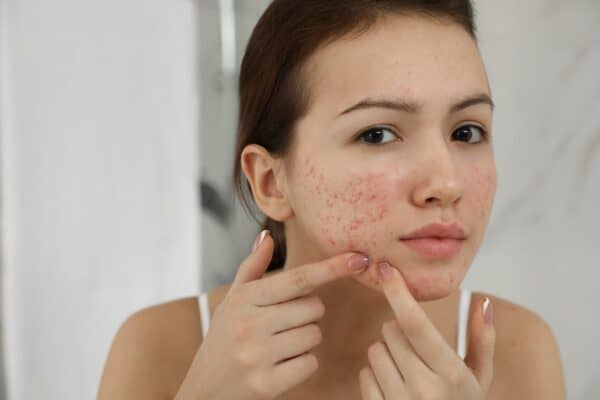
What causes acne scars? This is one of those questions that many people do not really want to think about. It is understandable that most people do not want to delve into the subject matter of acne and the potential for scarring, because it can be quite embarrassing.
Acne or pimples are usually the result of bacterial infection in the skin, and this is the case with acne scars. Most acne is a simple case of bacteria causing inflammation on the surface of the skin, which then results in a bumpy, inflamed appearance.
Acne scars are usually caused by infections from microorganisms like fungi, bacteria, yeasts, or molds, which cause redness, irritation and eventually infection. Acne scars can also be the result of injury to the skin such as surgery or an accident.
The most common type of infection, known as an acne-causing bacteria, is responsible for most of the appearance of acne on the face, back, chest, arms, legs and face. Acne typically causes inflammation and redness, but sometimes whiteheads and blackheads can appear as well. This is not uncommon, because blackheads tend to have larger pores than whiteheads. Some acne can also cause severe scarring.
The more common types of infection are referred to as “acne-causing microorganisms”, which include P.Acnes, P. acnes (tinea pedis), and T.Pylori (gordonii). These are the types of microorganisms that cause most of the acne outbreaks.
There are several different types of treatment options available for these types of acne-causing bacteria. In the past, it was necessary to take antibiotics for long periods of time in order to get rid of these infections. However, antibiotic treatments can actually make the infection worse and often leave scars behind. If left untreated, the bacteria will continue to multiply and cause new acne outbreaks.

Other prevention options involve the use of products containing certain ingredients. These products include benzoyl peroxide, salicylic acid, sulfur, resorcinol, retinol, salicylic acid, resorcinol, tK, retinol and tretinoin. These ingredients can help reduce redness and inflammation. These types of products are available at local stores, although they may not be available in all pharmacies.
It is also possible to prevent some of these from occurring by using some topical creams and lotions that contain tretinoin or tazarotene, which are the most common type of medication used in the fight against acne. This product contains both tretinoin and tazarotene, which are two different types of vitamin A. They work in conjunction to promote good immune system function.
Another common form of medication used is isotretinoin, which is used to treat a condition known as juvenile idiopathic atrophy, which is a genetic skin condition characterized by wrinkles, fine lines, thickened and sunken skin. The reason for this condition is unknown, but isotretinoin seems to affect both healthy and diseased skin.
Because isotretinoin works by inhibiting the ability of certain skin cells to produce collagen, it can be used to reduce the appearance of wrinkles and other signs of aging in people with this type of skin problem. It is commonly used to treat patients who have a low bone density. or those with psoriasis. People suffering from acne or the elderly should consult their dermatologist before using isotretinoin.
Severe scarring is not always caused by acne alone. Sometimes the cause of the scars is something much more serious. Some cases may require surgery to remove the affected area to make it look normal.
Surgery is usually the last resort for people who have been trying unsuccessfully to eliminate the scarring by non-surgical means. It is also the last resort for those who have very serious scarring that does not respond to over-the-counter creams and lotions. In these cases, cosmetic surgery may be the only treatment option. Depending on the severity of the scarring and other factors, it can be necessary to remove both the scarring and surrounding skin so that it looks completely normal.
The cost of surgery depends on several factors, including how extensive the scarring is and how severe it is. It is generally more expensive if the scarring has already spread, as it is more expensive to remove the skin. Scarring can also spread further into other areas if the scarring is not treated properly. Therefore, if you are looking to eliminate any type of scarring, you should always consult your dermatologist before undergoing any sort of treatment.
